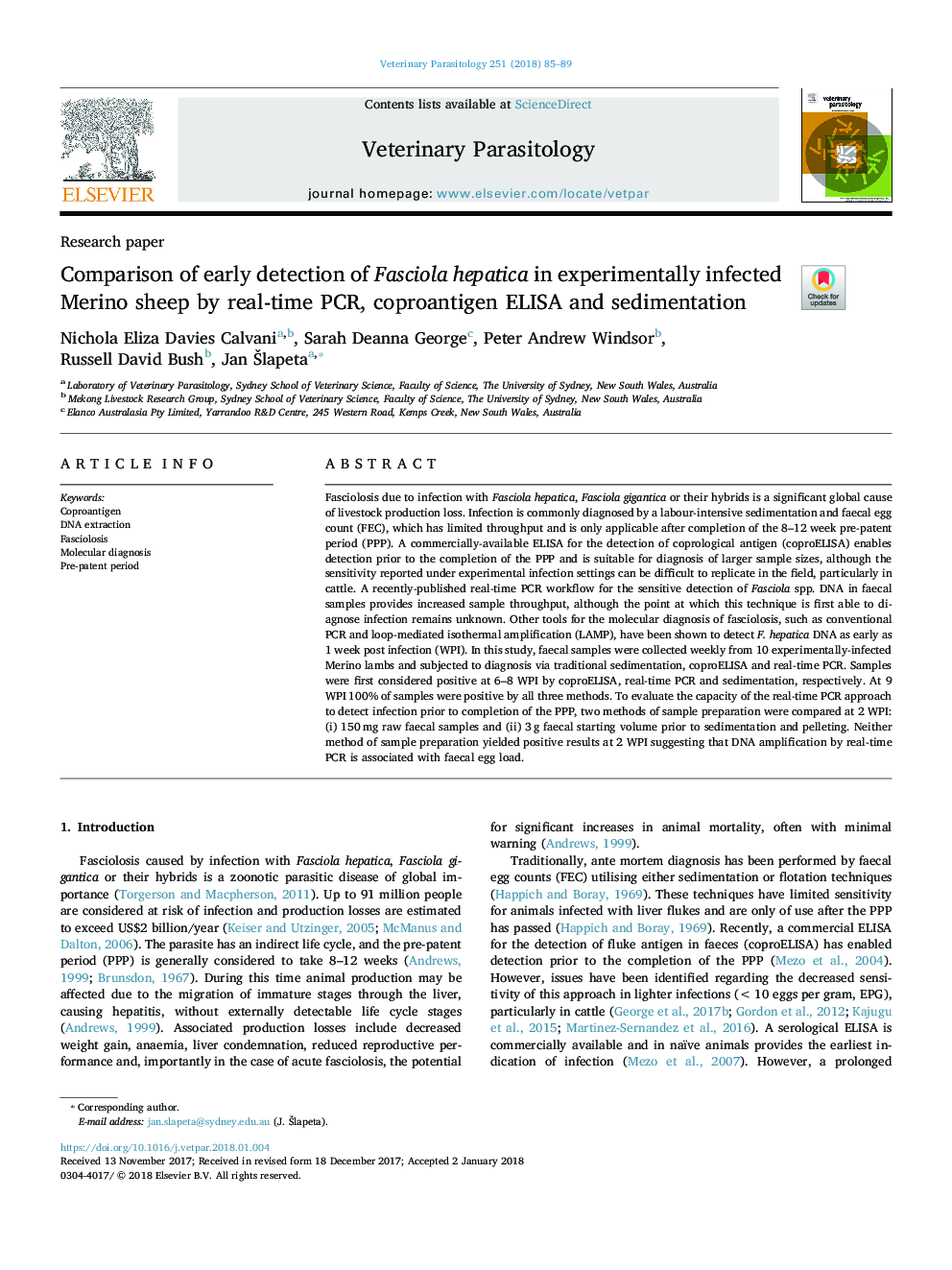| کد مقاله | کد نشریه | سال انتشار | مقاله انگلیسی | نسخه تمام متن |
|---|---|---|---|---|
| 8506147 | 1555625 | 2018 | 5 صفحه PDF | دانلود رایگان |
عنوان انگلیسی مقاله ISI
Comparison of early detection of Fasciola hepatica in experimentally infected Merino sheep by real-time PCR, coproantigen ELISA and sedimentation
دانلود مقاله + سفارش ترجمه
دانلود مقاله ISI انگلیسی
رایگان برای ایرانیان
کلمات کلیدی
موضوعات مرتبط
علوم زیستی و بیوفناوری
علوم کشاورزی و بیولوژیک
علوم دامی و جانورشناسی
پیش نمایش صفحه اول مقاله

چکیده انگلیسی
Fasciolosis due to infection with Fasciola hepatica, Fasciola gigantica or their hybrids is a significant global cause of livestock production loss. Infection is commonly diagnosed by a labour-intensive sedimentation and faecal egg count (FEC), which has limited throughput and is only applicable after completion of the 8-12 week pre-patent period (PPP). A commercially-available ELISA for the detection of coprological antigen (coproELISA) enables detection prior to the completion of the PPP and is suitable for diagnosis of larger sample sizes, although the sensitivity reported under experimental infection settings can be difficult to replicate in the field, particularly in cattle. A recently-published real-time PCR workflow for the sensitive detection of Fasciola spp. DNA in faecal samples provides increased sample throughput, although the point at which this technique is first able to diagnose infection remains unknown. Other tools for the molecular diagnosis of fasciolosis, such as conventional PCR and loop-mediated isothermal amplification (LAMP), have been shown to detect F. hepatica DNA as early as 1 week post infection (WPI). In this study, faecal samples were collected weekly from 10 experimentally-infected Merino lambs and subjected to diagnosis via traditional sedimentation, coproELISA and real-time PCR. Samples were first considered positive at 6-8 WPI by coproELISA, real-time PCR and sedimentation, respectively. At 9 WPI 100% of samples were positive by all three methods. To evaluate the capacity of the real-time PCR approach to detect infection prior to completion of the PPP, two methods of sample preparation were compared at 2 WPI: (i) 150â¯mg raw faecal samples and (ii) 3â¯g faecal starting volume prior to sedimentation and pelleting. Neither method of sample preparation yielded positive results at 2 WPI suggesting that DNA amplification by real-time PCR is associated with faecal egg load.
ناشر
Database: Elsevier - ScienceDirect (ساینس دایرکت)
Journal: Veterinary Parasitology - Volume 251, 15 February 2018, Pages 85-89
Journal: Veterinary Parasitology - Volume 251, 15 February 2018, Pages 85-89
نویسندگان
Nichola Eliza Davies Calvani, Sarah Deanna George, Peter Andrew Windsor, Russell David Bush, Jan Å lapeta,